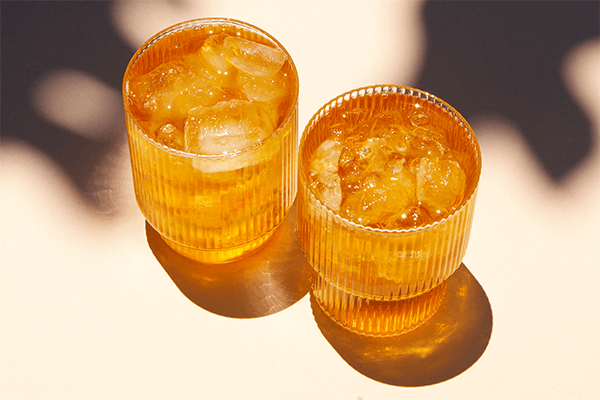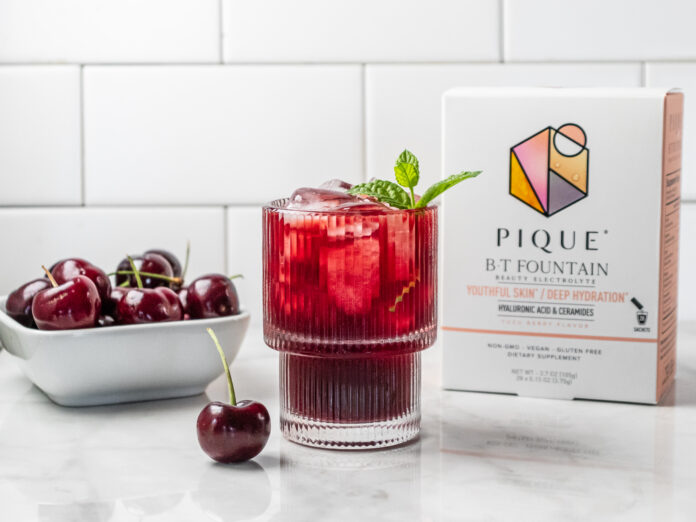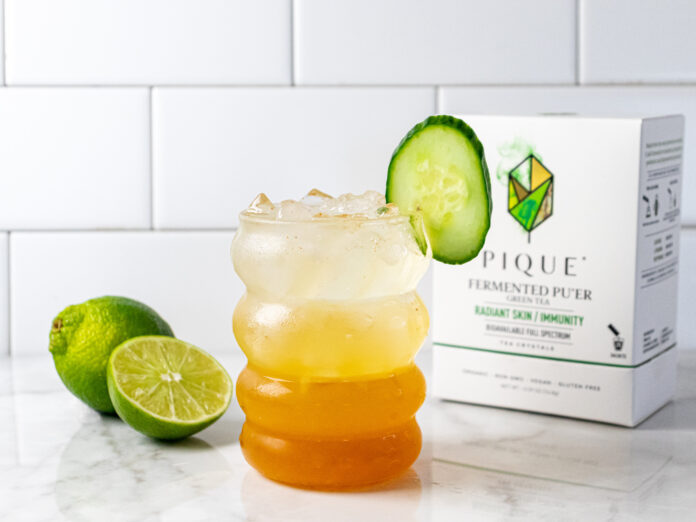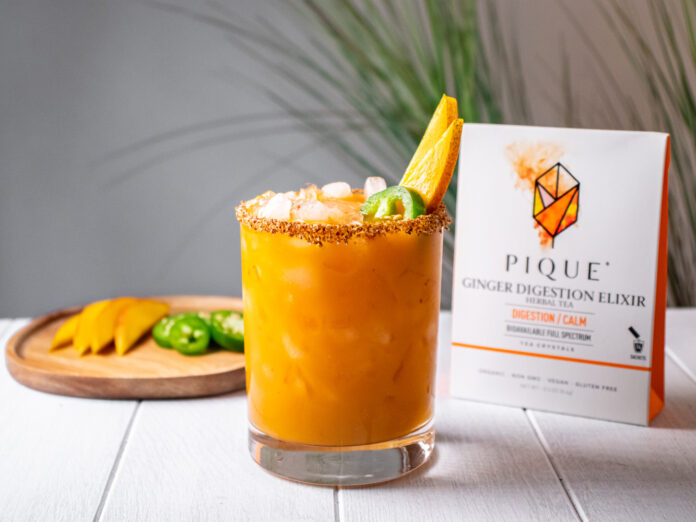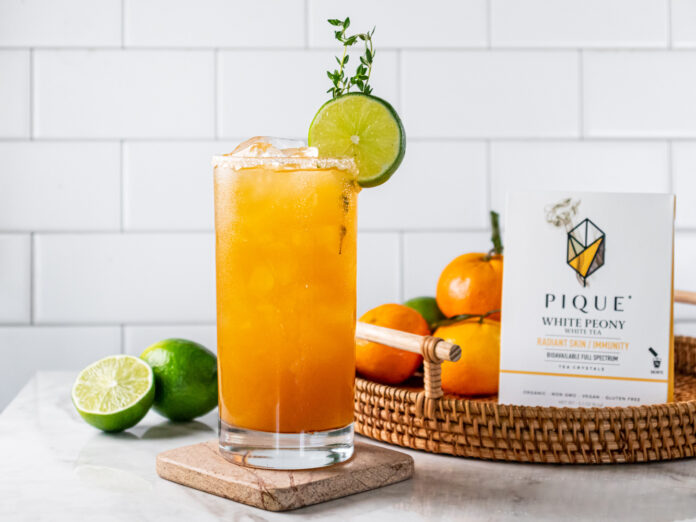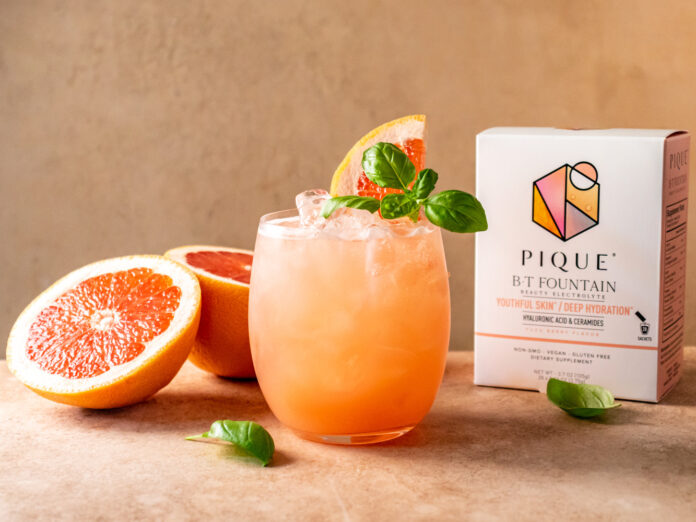Thanks to its delightful flavors and remarkable health properties, kombucha tea has recently grown in popularity and is now available at many grocery stores.
However, mainstream commercial kombucha is often loaded with sugar and may not offer the same probiotic and other health benefits of the traditional version.
Fortunately, making your own kombucha is fun and easy, even for beginners.
We’ve got everything you need to know to make your own kombucha at home safely and inexpensively.
What is kombucha tea?
Kombucha is a healthy, delicious, traditional fermented beverage made from sweetened tea.
Unlike other probiotic drinks (like kefir, for example), the active cultures in kombucha form a thick, dense layer over the liquid at the top of the fermentation vessel, called a kombucha mother or SCOBY (symbiotic culture of bacteria and yeast) (1).
Overall, the taste of kombucha tends to be tangy and tart, often with fruity or vinegary notes. The sweetness depends on the type of sweetener used and the length of fermentation (longer fermentation decreases sugar content and increases tartness or sourness).
According to researchers, the potential health benefits of kombucha include:
- Probiotic and gut health support from beneficial Lactobacillus and Saccharomyces strains (2)(3)
- Cellular health support due to the powerful polyphenol antioxidants from tea (4)(5)(6)(7)
- It’s an excellent source of vitamin B1, B6, B12, and vitamin C, with a single cup offering more than the RDA of these essential nutrients for an adult (8)
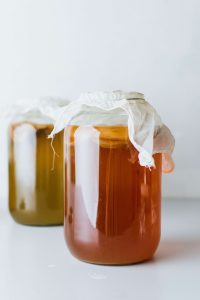
What are the ingredients of kombucha?
The standard recipe is to combine green or black tea, white sugar, and a kombucha mother or SCOBY and wait one to two weeks, then remove the mother and drink the mature kombucha liquid.
On the other hand, you can also use alternative teas, including herbal teas, and other types of sweeteners — such as more natural forms of sugar (but no zero-calorie sweeteners).
According to a 2020 study, using different types of tea may change the microorganism content and other properties of kombucha. (9)
Other popular teas for kombucha besides black or green tea include:
- White tea (9)
- Oolong tea (10)
- Pu’er tea (9)
- Hibiscus tea
- Rooibos tea (11)
- Lemon balm tea (12)
And in place of white cane sugar, people sometimes use maple sugar, brown sugar, raw or turbinado sugar, honey, or molasses.
In general, it’s recommended to start with the basic approach before substituting ingredients. That way, you can master the process and learn what traditional kombucha tastes like before you start experimenting.
How do you make kombucha at home?
Making your own kombucha requires very little in the way of special supplies or equipment.
If you’ve got a clean glass jar or vessel for fermentation (1-2 quarts is a common size for kombucha batches, up to 1-2 gallons), loose tea or tea bags, sugar or another sweetener, and non-chlorinated water, you’re nearly ready.
First, you’ll need to track down or buy a SCOBY mother or a kombucha starter culture.
If any of your friends make their own kombucha, you can ask them for a tiny, baby SCOBY or “daughter.” Over time, SCOBYs naturally grow layers and produce smaller SCOBYs that are perfect for giving away.
Otherwise, online retailers sell freeze-dried mothers and kombucha starter kits. You can also make your own kombucha from store-bought kombucha, discussed more below.
The main difference is that dried mothers or starter culture packs take a little bit more time to start producing drinkable kombucha. That said, they’re still quite user-friendly.
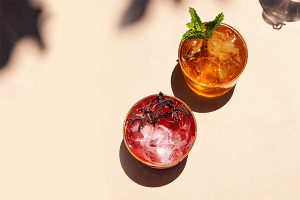
How to Make Kombucha from a SCOBY Mother
Like the ingredients list, the steps for making your own kombucha are simple.
Here’s what to do:
- Make tea (from Camellia sinensis) at a concentration of 5-7 grams per liter (or 2-3 bags per liter) of hot water in a clean glass container, then remove the loose leaf tea or bags after steeping.
- Sweeten the tea with 50-60 grams or a quarter cup of sugar (or another caloric sweetener) per liter, stir, then allow it to cool down to room temperature.
- Add a kombucha SCOBY or starter culture to the mixture.
- Cover with a paper towel, cheesecloth, or other breathable material and rubber band to keep dust and insects out.
- Allow the mixture to ferment in a warm, room temperature area out of direct sunlight for about 7-14 days. (Note: unusually cool or warm environments can slow down or speed up the fermentation process.)
- Try a sample of the kombucha liquid every one to two days. When it suits your flavor preference, remove the mother and a cup of mature kombucha, then store the remaining kombucha in the fridge. Kombucha liquid keeps for up to a month if you refrigerate it.
You’ve also got to take care of your SCOBY mother after each batch of kombucha.
The easiest way to store your SCOBY is to place it in the cup of mature kombucha you set aside during step six. A SCOBY will remain healthy for at least a month resting in kombucha at room temperature (known as a SCOBY hotel).
Whenever you’re ready, simply repeat the kombucha-making process, adding the extra cup of mature kombucha to the new batch along with the mother.
There’s a chance you’ll run into minor issues, especially during your first time making kombucha. If that happens, use these troubleshooting tips:
- If you notice mold forming in the tea liquid, or if it appears cloudy and smells “off,” discard the liquid immediately and repeat steps 1-4 above.
- Unfortunately, if the SCOBY itself gets moldy, it’s time to throw it away. While unlikely to happen, it’s not safe to produce kombucha from a moldy SCOBY.
- Based on your taste testing, if the tea liquid doesn’t seem to be fermenting, discard and change it out every 7-10 days (following steps 1-4 above) until it starts producing mature kombucha.
Dried SCOBYs or dormant cultures sometimes take a batch or two to “wake up” and begin making drinkable fermented kombucha, so be patient.
Eventually, after making a few successful batches of kombucha, you’ll notice that your healthy SCOBY mother has grown significantly in size. It may divide into several equal-sized layers, or could produce a small “daughter” SCOBY.
When this happens, you’ll need to either increase the batch size, give away part of the SCOBY to a friend, or discard it (we recommend composting — your garden will love the beneficial microorganisms!).
How to Make Your Own Kombucha With Store-bought Kombucha
If you can’t order a kombucha starter kit and don’t know anyone who can share a SCOBY, you can still do-it-yourself using commercial kombucha as a starter.
The process is exactly the same as the basic recipe, except instead of adding a SCOBY or starter culture, you’ll add 1-2 cups of store-bought kombucha during step three (see previous section).
The most important part is finding a store-bought kombucha with enough living microorganisms to work as a starter.
Make sure to use a brand that’s raw and unpasteurized (and preferably organic). If your kombucha liquid doesn’t seem to be activating after about 7-10 days, it’s best to try a different brand.
While this method can be a bit trickier at first, it ends up being exactly the same once a SCOBY forms.
It’s also possible that your first batch will activate (you’ll see bubbles) but take a while to form a SCOBY. If this happens, try adding a concentrated blend of more tea liquid and sugar to help it along.
Heat up a cup of water, steep 2-3 grams or 1-2 bags of tea, blend in 25 grams of sugar, strain leaves or remove the bag and allow to cool, then add the mixture to the fermentation vessel. Repeat every week until a SCOBY forms, then follow the basic recipe going forward.
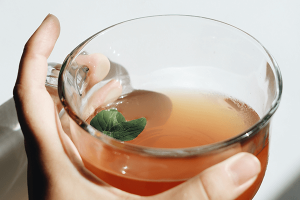
Second Fermentation Recipe to Make Kombucha Fizzy
You can use an optional “second fermentation” process to carbonate your kombucha.
The secondary fermentation stage is also the perfect time to add flavoring ingredients like fruit juice or herbs without interfering with the initial fermentation process or affecting the health of your SCOBY.
To start, use partially fermented kombucha that’s about 2-3 days “younger” than you would normally drink it.
Simply add the young kombucha (without the mother) to a sealed vessel for 24-48 hours at room temperature.
As the gases from the ongoing natural fermentation process build up with nowhere to escape, the result is carbonation.
Be sure to use caution if you try a second fermentation, because it pressurizes the contents of your vessel. The safest way is to use BPA-free plastic bottles, since they’re shatter-proof and allow you to gauge the extent of gas buildup.
Once your second fermentation vessel has built up a moderate amount of pressure, you can drink the fizzy kombucha or store it sealed in your fridge.
Is there alcohol in kombucha?
Kombucha naturally contains trace amounts of alcohol, but the amounts are usually very low.
One study found amounts as high as 3-3.5% alcohol by volume (ABV), but other scientific research suggests amounts around 0.1-2.0% ABV are more typical of most kombucha. (9)(13)
If you make your own kombucha, here are some optional tips to minimize the alcohol content (14):
- Use 5% or less sugar, because higher sugar content may support ethanol-producing yeast.
- Rinse your SCOBY between batches to wash any yeast off the surface and use a coffee filter to filter yeast filaments from mature kombucha liquid.
- Maintain an ambient temperature of 70 degrees Fahrenheit or below during fermentation, because yeast thrives at higher temperatures.
Anyone who wants to avoid alcohol may want to use caution when drinking kombucha, especially if you’re not sure how it was made.
Is making kombucha illegal?
In the United States, unless you’re selling kombucha, there’s virtually nothing to worry about legally.
Commercial kombucha with an alcohol content over 0.5% is taxed and regulated as an alcohol beverage, which is why manufacturers typically prefer to stay under that limit. (15)
Also, minors can’t buy kombucha with an alcohol content over 0.5% ABV. If you’re making boozy kombucha, it’s prudent not to give or sell it to anyone under 21.
Final Thoughts
Making your own kombucha is much healthier and more economical than buying sugary kombucha from the grocery store.
As a bonus, if you make kombucha regularly, you’ll end up with an extra SCOBY mother every month or two that you can share with friends or family so they can make kombucha, too!
And if you feel adventurous, you can create endless custom kombucha variations by experimenting with infinite combinations of different teas and sweeteners.
